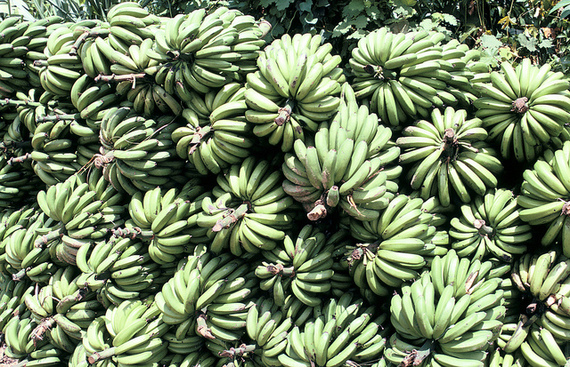Imagine yourself living in Uganda, a landlocked country in East Africa, where more than 14 million people eat bananas almost daily. In fact, as a resident in Uganda, chances are you and everyone you know is consuming 0.7 kilograms of bananas per day. Citizens of no other country in the world eat more bananas than Ugandans.
But suddenly, bananas, your staple food, are under threat. Banana bacterial wilt (BBW), a disease, is attacking bananas. It has already destroyed 90 percent of bananas on some farms. BBW is known to spread rapidly via soil and other plants, and it can cause total crop loss within a year.
Not to exaggerate, but this could be a disaster for Uganda. The bacteria needed to be stopped immediately. That's what Lyudmila Bujoreanu, an information and communications technology consultant at the World Bank, thought when she found out about bacteria destroying bananas. She started to explore solutions that would save the staple food.
She found out about U-report, a communications technology developed by UNICEF Uganda to "give young Ugandans a voice on issues they care about." There are more than 240,000 U-reporters and the number is growing every day. You just have to text "join" to 8500 in Uganda to become a U-reporter.
Bujoreanu and the team reached out to UNICEF to see if U-reporters can help "visualize the BBW epidemic and disseminate information to affected communities." Then she and her colleagues launched a five-day campaign with UNICEF and others to save bananas.
The first SMS was sent on March 26, 2013 to almost 190,000 U-reporters with a question: "Do you know any farmers whose banana plantations or crops are infected with banana bacterial wilt disease? YES or NO."
Within 24 hours, responses from over 35,000 U-reporters helped track the spread of BBW across Uganda. In days that followed, SMSs were sent out to inform U-reporters about BBW and how to control it. Within just five days, 190,000 Ugandans learned about BBW and what they can do to save bananas on their farms.
Using U-reporters to save bananas was a simple, effective, and cheap solution. It only costs 3 U.S. cents per person for each SMS. If BBW had destroyed bananas in Uganda, the country could have lost $360 million per year.
Watch this video about U-reporters:
This is a classic example of youth using technology to help themselves and their communities to avert what might have become a national challenge.
Have you seen others? Tell us in the comments.

